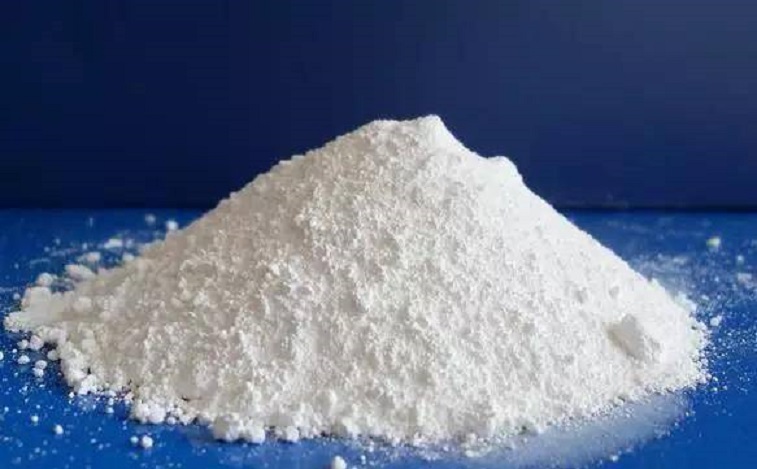Titanium Dioxide in Plastics

Join Eric Smith at Stanford Advanced Materials as he explores the essential role of titanium dioxide in the plastic industry with Dr. Jane Doe, a specialist in materials science. This episode delves into how titanium dioxide, celebrated as the world's best white pigment, enhances the durability, UV resistance, and color stability of plastic products.
Learn how titanium dioxide protects outdoor plastics from UV radiation, improves their aesthetic appeal, and boosts their mechanical properties, making them more suitable for high-temperature applications. The discussion also covers its compatibility with various types of plastics and the growing demand for specialized surface treatments to enhance its performance.
Want to know more about how titanium dioxide drives innovation in the plastic industry? Send an inquiry or connect with us on our social media channels.
Welcome back to our podcast series! Today, we’re exploring a fascinating topic—titanium dioxide and its crucial role in the plastic industry. To delve into this, we have Dr. Jane Doe with us. Dr. Doe, thanks for joining us.
It's great to be here! Titanium dioxide is indeed a key player in the plastic industry, and I’m excited to discuss its many benefits and applications.
Let’s start with an overview. Titanium dioxide is celebrated for being the best white pigment in the world. Its exceptional qualities make it indispensable across various industries, including coatings, paper making, and of course, plastics. In the plastic industry, it stands out as the second-largest consumer of this pigment.
That’s right. Titanium dioxide enhances plastic products in several ways. For starters, it significantly improves their heat resistance, light resistance, and weather resistance. These properties are crucial for maintaining the integrity and longevity of plastic materials, especially those exposed to outdoor conditions.
Exactly. One of the key benefits of titanium dioxide is its ability to provide UV protection. This is particularly valuable for outdoor plastic products, which are often exposed to sunlight. Titanium dioxide helps prevent degradation and discoloration, ensuring these products maintain their appearance and strength over time. Speaking of UV protection, how does titanium dioxide protect plastics from UV radiation?
Titanium dioxide acts as a UV blocker by absorbing and scattering harmful UV rays. This prevents the plastic from becoming brittle, discolored, or weakened. It’s especially important for items like outdoor furniture, automotive parts, and packaging materials that need to withstand constant sunlight.
Titanium dioxide is also known for improving the aesthetics and color stability of plastics. Can you explain how it achieves that?
Certainly. Titanium dioxide has high hiding power and strong coloring ability, which means it helps achieve bright, uniform colors in plastic products. The fine particle size of titanium dioxide, usually between 0.15 to 0.3 micrometers, helps create a blue undertone that neutralizes any yellowish tint in the resins. This results in a cleaner, more attractive appearance, and the pigment’s stability ensures the colors remain vibrant over time.
In addition to aesthetics, titanium dioxide enhances the mechanical properties of plastics. How does it affect heat resistance and overall performance?
By incorporating titanium dioxide, manufacturers can increase the heat resistance of plastic products. This makes them more suitable for high-temperature applications. For example, automotive parts and electrical housings benefit from enhanced heat resistance, as they can withstand elevated temperatures without losing strength or warping.
Titanium dioxide is compatible with a wide range of plastics. Can you tell us more about its use in different types of plastics?
Titanium dioxide works well with both thermosetting and thermoplastic plastics, including polyolefins, polystyrene, ABS, and PVC. It can be mixed with dry resin powder or liquids containing plasticizers, depending on the manufacturing process. Some manufacturers prefer using a masterbatch for better control over the pigment’s dispersion and concentration.
As the demand for outdoor and weather-resistant plastic products grows, the need for specialized titanium dioxide with surface treatments is increasing. What can you tell us about these treatments?
Surface treatments help enhance the performance of titanium dioxide in plastics. For instance, rutile titanium dioxide, known for its superior weather resistance, often undergoes treatment with silicon, aluminum, or zirconium compounds. These treatments prevent issues like moisture-induced pore formation and ensure a smoother surface finish on the final product.
Looking ahead, what’s the future of titanium dioxide in the plastic industry?
The role of titanium dioxide in the plastic industry is expected to grow as new applications emerge and the demand for high-performance plastics increases. Its versatility and effectiveness will drive innovation in formulations and surface treatments, keeping it at the forefront of plastic technology.
Thanks for this insightful discussion, Dr. Doe.
My pleasure. It’s been wonderful to explore the many ways titanium dioxide enhances plastic products.
And thank you to our listeners for tuning in. We’ll be back with more interesting topics soon. Until then, stay curious!
